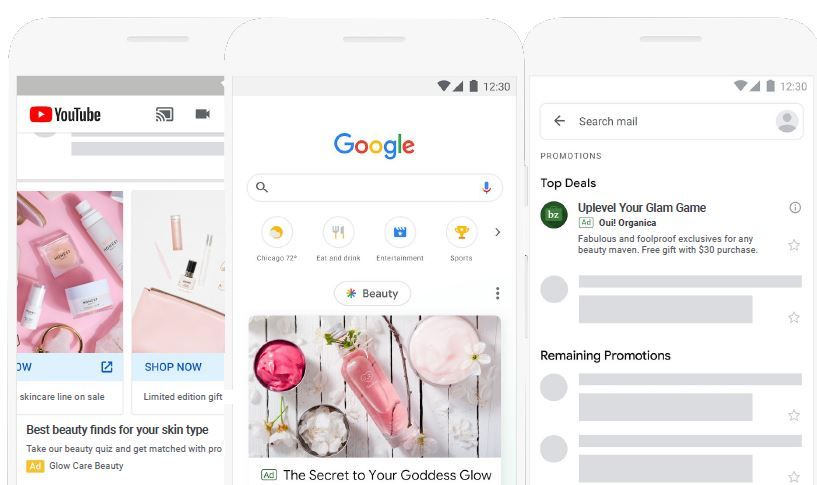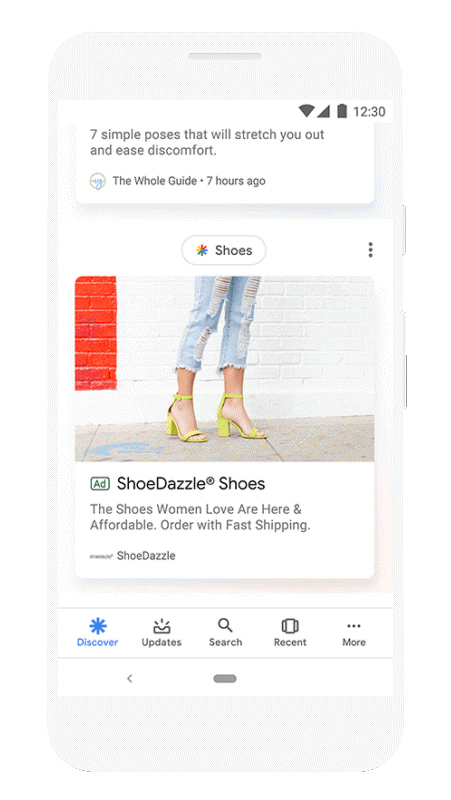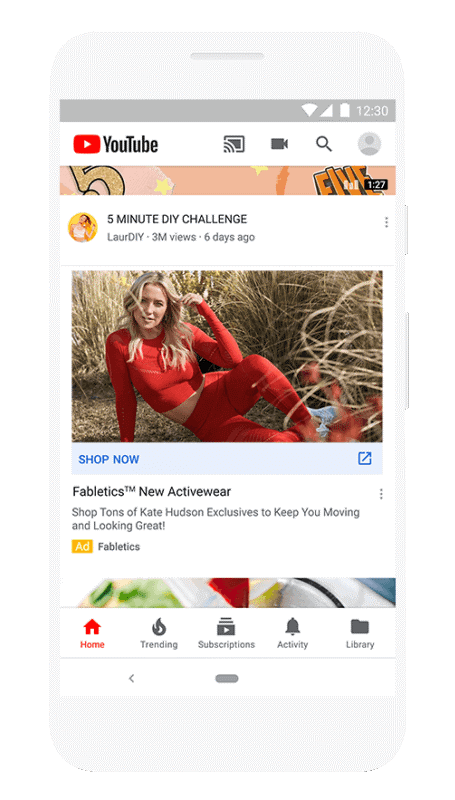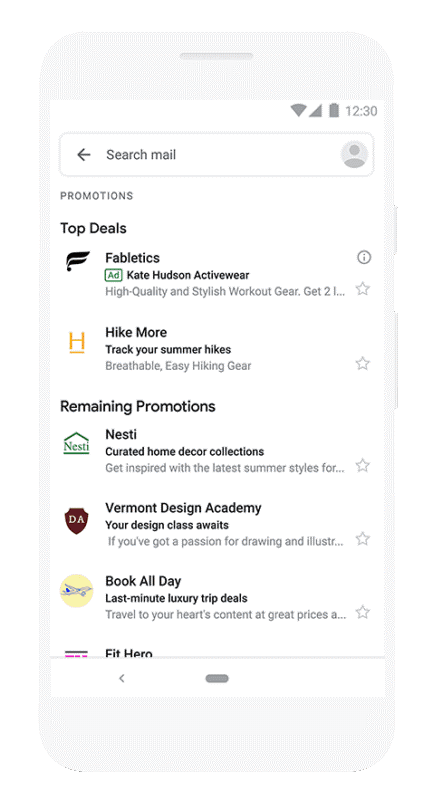What Do You Need to Know About Google Discovery Ads?

People turn to the internet to get answers, keep up with what they care about and be inspired by new ideas. Combining the rise of AI and mobile browsing, the way users are discovering brands and products online is shifting. In Google’s never-ending quest to reach audiences where they love to be (aka browsing on their mobiles), Discovery ads have recently been introduced to advertisers worldwide.
With nearly 85 percent of people taking action within 24 hours of discovering a new product, these ads could have a big impact on your customer’s purchasing journey. Take a read to learn more.
What are Discovery ads?
These prominent ad placements reach users in the moments before they even actively begin searching for a product. Discovery ads allows brands to showcase their products to targeted audiences on Google’s Discover feed alongside YouTube and Gmail through visually engaging, clickable images.
Teaming up with Google’s automation, advertisers can stay one step ahead of customer serving ads based on customer intent, website visits, video watches, app downloads and even map searches. By instigating interest in your products to an engaged audience, these ads can increase conversions, ROI and of course, brand awareness through a single campaign.
Where are Discovery ads displayed?
The more your audience uses Google products, the more likely they are to come across Discovery ads. With Google’s flexible environment, they can be displayed in a number of different places:
Google Discover feed
Reach an active and engaged audience while they interact with their daily activities and interests. Using Google Discover, users can personalise their feed by selecting specific topics for a personalised and curated result. The feed is shown on the homepage of the Google app or the Google.com homepage on mobile.

On the Discover feed, advertisers have the option to display one or more image showcasing their product or service within a slideshow format.
YouTube mobile home feed
With over 2 billion monthly users, YouTube is an effective space to target users who are regularly consuming content. Reach your potential customers on YouTube’s mobile homepage where Discovery ads can be displayed as native in-feed ads with a thumbnail image, up to three lines of copy and a CTA banner.

If the user clicks the ad, that person will be redirected to the YouTube channel page to watch the video while the CTA banner can link out to a specific landing page.
Gmail
With over 1.5 billion monthly users, Gmail is an effective place to capture their audience’s attention while they catch up on emails. Often, commercially produced emails can end up in the spam or junk folder, but with Discovery ads, there is no need for emails to target users in their inbox. Your ad will be displayed through the Social and Promotions tab, looking and functioning similar to a normal Gmail sponsored ad.

You may be wondering why Google has specifically chosen these three places for Discovery ads. Discover, YouTube and Gmail are all areas where users interact while in a learning and discovery mindset. In fact, 76 percent of people enjoy making an unexpected discovery when shopping online, while 60 percent claim to have found their favourite brands while catching up on news feeds, watching videos and reading emails.
Why should you use Discovery ads?
With Google’s variety of ad formats available, it can be hard to know where to invest your paid media budget. Discovery ads represent a different opportunity to spark interest with your ideal customers in a non-intrusive way on platforms they’re already engaging with. Here are some of the top reasons to consider using Discovery ads:
- Reach more people with a single ad campaign: With the ability to reach 2.8 billion people worldwide, Discovery ads allow you to reach more potential customers as they browse through their interests.
- Drive more engagement: Visually rich and relevant content sparks action, making it more likely for people to engage with these ads. Google’s understanding of customer intent allows you to show more relevant, meaningful ads to people who are most interested and ready to learn.
- Reach your mobile audience: With more people than ever before using their mobiles to browse, Discovery ads render natively across Google properties to ensure the best user experience. These ads rely heavily on machine learning to seamlessly showcase your content across different devices.
- Automated bidding options: Using maximise conversions bidding or target CPA, you can optimise your campaign bids to meet your objectives and drive an ROI. You provide the campaign features such as headlines, inspirational images and high-quality logos and Google helps to show your ads to highly interested customers using your predetermined CPA bid and budget.
When should you use Discovery ads?
There a number of scenarios where Discovery ads could be a good choice for reaching your objectives, these could include:
- If you want to drive conversions: You could use Discovery campaigns for a number of conversion objectives whether it’s website visits, newsletter signups or to drive sales.
- If you want to reach new customers: Sharing inspiring creatives across Google feeds, you can drive interest from relevant customers while they’re open to trying new brands.
- If you want to reconnect with customers: Users return time and time again to the platforms they enjoy using, usually on a daily basis. Not only can Discovery ads help to reach new customers, they can also drive action from those who know your brand best and are more likely to engage.
- If you want to increase brand awareness: Promote your products and services while building your brand’s identify in front of the users who matter most.
What are the targeting capabilities of Discovery ads?
Like the Google Display Network, Discovery Ads using custom, affinity and in-market audiences. Advertisers have free reign over which audiences they want to reach with their ads thanks to the specific targeting capabilities:
- In-market audiences: Reach users who have recently searched, browsed or are actively considering making a purchase. Google has many different in-market audiences for brands to leverage based on users who are ready to make a purchase.
- Demographics: Demographic targeting on Google allows you to target your ads to users based on their age, gender, parental status, relationship, education and homeownership status.
- Remarketing: Direct your ads to those customers who have paid past visits to your website or made a purchase. You can create different remarketing audiences based on different interactions such as shopping cart abandonment, those who have recently purchased or visits to a specific page.
- Affinity and custom intent: Affinity and custom intent audiences target users based on the topics they have searched for in the past.
- Life events: Google even allows you to target people based on major milestones such as starting a business, getting married, graduating or purchasing a home for those extra personalised interactions.
If you prefer not to select a specific audience for your campaigns, Google will use its own signals to decide who sees your ads. As the platforms these ads are displayed across are regularly interacted with, Google is capable of creating a more detailed overview of what they do and don’t want to see. This allows the search engine to learn more about the user, tailoring their preferences for a curated experience. Additionally, if you want to target more than one audience, you can create several ad groups to do so.
Discovery ads rely on machine learning to showcase your brand’s offering across different channels. Just like any other paid aids, Discovery ads are charged on a CPC basis and when combined with Smart Bidding capabilities, you can meet your performance goals by maximising conversion biddings or target CPAs to optimise your campaigns. Similar to Responsive Search ads and Responsive Display ads, you can provide Google with several different assets for your Discovery ads to test variants and show individual customers more personalised messaging.
What’s next?
The path to conversion is only becoming more complex as people engage across multiple platforms. To cut through the digital noise, you should aim to offer inspiring and useful ad experiences that encourage users to take the next step. With Discovery ads, you can now reach your audiences as they regularly browse through their highly curated feeds across YouTube, Discover and Gmail.
If you want to find out about the potential of Discovery ads in your paid media strategy, contact us today. We are well experienced at matching up brands with relevant audiences and getting the most return on your budget.